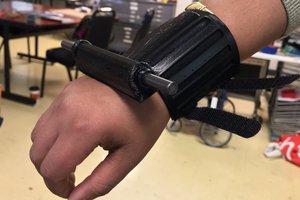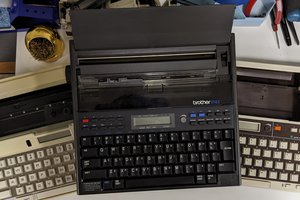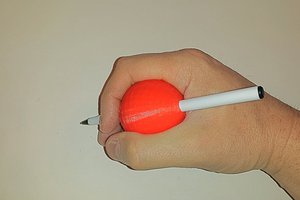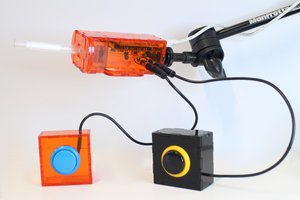Checkout the full build video ↓
Supplies
Parts
- 1 × QT Py RP2040 Adafruit
- 1 × TLV493D Triple-Axis Magnetometer Adafruit
- 1 × STEMMA QT / Qwiic JST SH 4-pin Cable - 100mm Long Adafruit
- 2 × Tactile Button switch (6mm) Adafruit
- 3 × Adafruit LED Sequins - Emerald Green (optional) Adafruit
- 4 × Rubber Bumper Feet Adafruit
Hardware
- Round Magnets Amazon
- 6 × (6 × 2mm)
- Springs Amazon
- 3 × Compression 23/64" × 1-3/8"
- 3 × Extension 13/64" × 13/16"
- M2.5 Heat-Set Inserts Amazon
- 24 × 3.4 mm
- M2.5 Socket Head Screws Amazon
- 10 × 3mm
- 3 × 5mm
- 7 × 8mm
- 4 × 12mm
3D printing
Finishing (optional)
- Assorted Grits Sandpaper Amazon
- Glazing and Spot Putty Amazon
- Filler Primer Amazon
- Spray Paint Amazon
- Flat Matte Clear Coat Amazon
Tools
- 3D Printer Amazon
- Soldering Station/Iron. Amazon
- Helping hands Amazon
- Precision Screwdriver Set Amazon
- Wire stripper Amazon
- Sanding block
- Flux, Solder
- Hook up wire
- Flush cutters
- Hobby knife
- Tweezers and pliers
Affiliate links may be included in the parts list. I may receive a small commission at no additional cost to you.
 Salim Benbouziyane
Salim Benbouziyane


 Christopher Sweeney
Christopher Sweeney

 Neil means
Neil means
 benjaminaigner
benjaminaigner
This looks soooo nice. And the video is beautiful.
I saw you flip quickly past the spacenavd website in the video, while saying that you didn't want it to get complicated on the software side. I was going to suggest it because It buys you compatibility with a broad range of applications -- anything that supports a Spacemouse.
But the custom firmware -> USB approach is good too.
I actually do both: run spacenavd for those applications that use it, and a custom userspace (Python, probably too slow) program to push mouse/keyboard commands to applications that otherwise wouldn't. Mostly scrolling in PDFs and webpages and scrubbing/jogging in Audacity.
I guess where I'm going with this is that it might also be cool to have multiple profiles, or at least a quick way of reflashing the device. At least it's fun to play around with. You might find you like using it as a more general controller.